|
|
|
Sort Order |
|
|
|
Items / Page
|
|
|
|
|
|
|
| Srl | Item |
| 1 |
ID:
121264


|
|
|
|
|
| Publication |
2013.
|
| Summary/Abstract |
Policies formulated to reduce greenhouse gas (GHG) emissions, such as a low-carbon fuel standard, frequently rely on life-cycle assessment (LCA) to estimate emissions, but LCA results are often highly uncertain. This study develops life-cycle models that quantitatively and qualitatively describe the uncertainty and variability in GHG emissions for both fossil fuels and ethanol and examines mechanisms to reduce those uncertainties in the policy process. Uncertainty regarding emissions from gasoline is non-negligible, with an estimated 90% confidence interval ranging from 84 to 100 g CO2e/MJ. Emissions from biofuels have greater uncertainty. The widths of the 90% confidence intervals for corn and switchgrass ethanol are estimated to be on the order of 100 g CO2e/MJ, and removing emissions from indirect land use change still leaves significant remaining uncertainty. Though an opt-in policy mechanism can reduce some uncertainty by incentivizing producers to self-report fuel production parameters, some important parameters, such as land use change emissions and nitrogen volatilization, cannot be accurately measured and self-reported. Low-carbon fuel policies should explicitly acknowledge, quantify, and incorporate uncertainty in life cycle emissions in order to more effectively achieve emissions reductions. Two complementary ways to incorporate this uncertainty in low carbon fuel policy design are presented.
|
|
|
|
|
|
|
|
|
|
|
|
|
|
|
|
| 2 |
ID:
121286


|
|
|
|
|
| Publication |
2013.
|
| Summary/Abstract |
This paper illustrates the main results of an expert elicitation survey on advanced (second and third generation) biofuel technologies. The survey focuses on eliciting probabilistic information on the future costs of advanced biofuels and on the potential role of Research, Development and Demonstration (RD&D) efforts in reducing these costs and in supporting the deployment of biofuels in Organisation for Economic Co-operation and Development (OECD) and non-OECD countries. Fifteen leading experts from different EU member states provide insights on the future potential of advanced biofuel technologies both in terms of costs and diffusion. This information results in a number of policy recommendations with respect to public RD&D strategies and is an important contribution to the integrated assessment modelling community.
|
|
|
|
|
|
|
|
|
|
|
|
|
|
|
|
| 3 |
ID:
121321
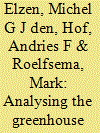

|
|
|
|
|
| Publication |
2013.
|
| Summary/Abstract |
As part of the Cancún Agreements, 45 non-Annex I countries have pledged mitigation action plans, of which 16 countries, including the seven major emitting countries, have submitted quantified mitigation actions. Many countries published their business-as-usual (BAU) emissions to which their pledges are connected. This study analyses the expected emission levels from the pledged, quantified actions, and whether these are consistent with achieving the 2 °C target. One of the main findings is that new BAU emission projections have led to about 2.5 GtCO2eq higher emission levels expected from pledges by non-Annex I countries. The emissions for non-Annex I countries as a group would be between 9% and 12% below our 2020 BAU emission projections, for, respectively, the unconditional and conditional pledges. This result might be conservative as we assume countries without quantified pledges follow BAU. This implies that for a medium chance of achieving 2 °C, Annex I countries would need to reduce its emissions by about 50% below 1990 levels by 2020. If Annex I countries as a whole would reduce emissions by 13% to 18% below 1990 levels, as expected from the pledges, the reduction of non-Annex I countries should be 22% to 34% below BAU levels for a medium chance of achieving 2 °C.
|
|
|
|
|
|
|
|
|
|
|
|
|
|
|
|
| 4 |
ID:
121291
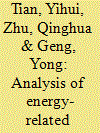

|
|
|
|
|
| Publication |
2013.
|
| Summary/Abstract |
With China's increasing pressures on reducing greenhouse gas (GHG) emission, Chinese iron and steel industry (ISI) is facing a great challenge. In this paper, we address the energy-related GHG emission trajectories, features, and driving forces in Chinese ISI for 2001-2010. First, energy related GHG inventory for ISI is made for both scope 1 (direct emissions) and scope 2 (including imported electricity emission). Then, the driving forces for such emission changes are explored by utilizing the method of logarithmic mean Divisa index (LMDI) decomposition analysis. Results indicate that Chinese ISI experienced a rapid growth of energy related GHG emission at average annual growth rate of 70 million tons CO2e. Production scale effect is the main driving factor for energy related GHG emission increase in Chinese ISI, while energy intensity effect and emission factor change effect offset the total increase and energy structure has marginal effect. Construction, manufacture of general purpose and special purpose machinery and manufacture of transport equipment sectors are main sectors for embodied emissions, amounting for more than 75% of the total embodied emissions from Chinese ISI. Such research findings propose that a detailed consideration can help make appropriate polices for mitigating ISI's energy-related GHG emission.
|
|
|
|
|
|
|
|
|
|
|
|
|
|
|
|
| 5 |
ID:
121311


|
|
|
|
|
| Publication |
2013.
|
| Summary/Abstract |
Biogas production processes are often multifunctional systems, which also produce fertilizers from digested sludge. The environmental impacts of such systems are usually determined using life cycle assessment (LCA). There are alternative approaches to conduct the LCA, e.g., allocation of emissions based on a product's and co-product's energy content according to the Renewable Energy Directive (RED), or substitution without allocation according to the ISO 14040 standard. We calculated the climate change impacts of biogas production using these two alternative methods, whilst also considering process modifications of the base case biogas production process. The aim was to find out whether the production system achieves the saving targets for greenhouse gas (GHG) emissions set by the RED. Since the RED enables different interpretations of its calculation rules, we created four case studies representing alternative ways to allocate the emissions to the reject water and solid fractions separated from the sludge. Consequently, our emission estimates for the base case vary between 16.9 and 47.7 g CO2/MJ, while the emission savings range from 42% to 80%. Most of the case studies achieved the most stringent saving target (60%).
|
|
|
|
|
|
|
|
|
|
|
|
|
|
|
|
| 6 |
ID:
121305


|
|
|
|
|
| Publication |
2013.
|
| Summary/Abstract |
To meet the energy requirement for transport, blending automotive fuels with ethanol has been mandated in India like several other countries across the globe. The entire blending requirement has to come from molasses (by-product of sugarcane). Ethanol produced from molasses will not be able to meet the blending targets due to cyclical nature of sugar cane production resulting in shortage of molasses and its competing uses (potable and pharmaceutical use). This has promoted research efforts to augment energy sources that are sustainable and economically viable. One such source that can be commercially exploited for ethanol production is sweet sorghum. The sugars in the stalks of sweet sorghum can be crushed to produce juice, which can be processed into ethanol for blending. An attempt is made in this paper to assess viability of ethanol production from sweet sorghum. Net Present Value (NPV), the indicator of economic viability assessment, is negative and would thus be difficult for the industry to take off under the current scenario of ethanol price, feedstock price and ethanol recovery rate. Hence, an enabling environment and policy support for bio-ethanol production from sweet sorghum is crucial to meet future blending requirements.
|
|
|
|
|
|
|
|
|
|
|
|
|
|
|
|
| 7 |
ID:
121316


|
|
|
|
|
| Publication |
2013.
|
| Summary/Abstract |
The anticipated expansion of offshore wind energy in the U.S. has been the subject of considerable legislative effort. The Energy Policy Act (EPAct) of 2005 and the Outer Continental Shelf Lands Act (OSCLA) detail the criteria the federal government must follow when allocating leases for offshore wind farms. The Bureau of Ocean Energy Management (BOEM) provides primary federal oversight to offshore wind in federal waters, and in 2009 they released their formal management guidelines going forward. This research examines lease allocation methods BOEM may use, as well as several promising alternatives, through the lens of the mandated criteria set forth by OSCLA and the EPAct of 2005. We find significant variation between allocation methods in terms of how well they meet each of the criteria. Price-based allocations will have difficulty in meeting criteria while also accounting for the immature status of the offshore wind energy industry. Instead, a multiple factor approach which includes non-monetary considerations may be a more appropriate way to balance federal mandates and industryneeds.
|
|
|
|
|
|
|
|
|
|
|
|
|
|
|
|
| 8 |
ID:
121275


|
|
|
|
|
| Publication |
2013.
|
| Summary/Abstract |
The Brazilian biodiesel program has created great demand for biodiesel. The production of oleaginous derived biodiesel produced by small-scale farmers is a key objective of PNPB. The Social Fuel Seal is one of the instruments for achieving this goal. Five years after the mandatory implementation of program, Brazil is among the world's leading producers of biodiesel. However, the goal of the productive insertion of small-scale farmers in Brazil's less favored regions has not been fully achieved. The Brazilian government has faced difficulties to promote regional development based on PNPB, consequently not reaching the audacious goals that were set at the beginning of the program. In this context of difficulties, the productive arrangements with palm oil should be emphasized. This paper submits in detail the model developed by Agropalma - in partnership with public agencies - together with family farming in the North of the country. These social projects are taken as reference and can promote social inclusion in the country's national biodiesel productive chain. Moreover, this case can serve as an assessment tool for other countries that seek to invest in the production of biodiesel with the concern for the social production inclusion of disadvantaged small-scale family farmers.
|
|
|
|
|
|
|
|
|
|
|
|
|
|
|
|
| 9 |
ID:
121292
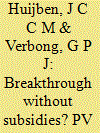

|
|
|
|
|
| Publication |
2013.
|
| Summary/Abstract |
Despite a lack of steady governmental support for PV in the Netherlands over the last decade, from 2008 onwards an increased number of initiatives started experimenting with new business models for PV. Though absolute numbers of installed capacity are still low, this is a promising sign. In this article we aim to contribute to the understanding of these developments by using insights from both business model and transition studies literature (i.e. Strategic Niche Management). By performing a literature study and a series of interviews we found three main types of business models: Customer-Owned, Community Shares and Third Party. Financial viability of these was found to be heavily dependent on net metering regulations which are surrounded by uncertainty and struggle about its meaning and application. Also, the overall PV niche is maturing. We found several local and national organizations lobbying for expansion of the space for PV business model experiments and enabling knowledge sharing and networking between initiatives. Furthermore, a number of regime players is getting involved in the PV niche. Considering the current economic turndown and related subsidy cuts in many other countries we believe the Netherlands, with its relatively poor and unstable support system, could serve as an example.
|
|
|
|
|
|
|
|
|
|
|
|
|
|
|
|
| 10 |
ID:
121287


|
|
|
|
|
| Publication |
2013.
|
| Summary/Abstract |
Spatial relationships are known phenomena in ecological studies that refer to the relationships between certain variables observed in different localities. Different mechanisms have been suggested to explain this phenomenon, such as the pollution displacement hypothesis, foreign direct investment, international trade, and strategic response of countries to transboundary pollution flows. This paper develops a new mechanism in the sense that environmental quality of countries spreads spatially to their neighbors through the spillover of the institutional quality of countries. To test this hypothesis, a panel data model is constructed that estimates the impact of the institutional quality of countries and their neighbors on their CO2 emission intensity of energy use using data for 129 countries over the period 1980-2007. The findings prove the existence of this mechanism at the global and regional levels.
|
|
|
|
|
|
|
|
|
|
|
|
|
|
|
|
| 11 |
ID:
121290
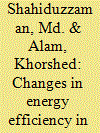

|
|
|
|
|
| Publication |
2013.
|
| Summary/Abstract |
This paper provides an empirical estimation of energy efficiency and other proximate factors that explain energy intensity in Australia for the period 1978-2009. The analysis is performed by decomposing the changes in energy intensity by means of energy efficiency, fuel mix and structural changes using sectoral and sub-sectoral levels of data. The results show that the driving forces behind the decrease in energy intensity in Australia are efficiency effect and sectoral composition effect, where the former is found to be more prominent than the latter. Moreover, the favourable impact of the composition effect has slowed consistently in recent years. A perfect positive association characterizes the relationship between energy intensity and carbon intensity in Australia. The decomposition results indicate that Australia needs to improve energy efficiency further to reduce energy intensity and carbon emissions.
|
|
|
|
|
|
|
|
|
|
|
|
|
|
|
|
| 12 |
ID:
121315
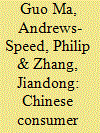

|
|
|
|
|
| Publication |
2013.
|
| Summary/Abstract |
Energy saving is now an important component of China's energy policy. This paper reports the findings of a survey carried out in 2009 and 2010 of 246 citizens at different locations in the municipality of Chongqing in order to reveal information about attitudes towards energy and energy saving in the context of household electrical appliances. This study shows that citizens in Chongqing receive relatively little information and guidance on how to save energy in the home and that their stated level of knowledge on this subject is also rather limited. Respondents showed some willingness to save energy as long as this did not reduce their comfort and convenience, and they appeared likely to respond to economic incentives, such as high electricity prices or discounts on appliances. But they seemed to be unaware of the potential for information to help them save energy. The survey also demonstrated a high degree of heterogeneity across society with respect to sources of information and trust in those sources and with respect to attitudes to energy saving at home. These results show that the government needs to substantially adjust its strategies for promoting household energy saving.
|
|
|
|
|
|
|
|
|
|
|
|
|
|
|
|
| 13 |
ID:
121322


|
|
|
|
|
| Publication |
2013.
|
| Summary/Abstract |
State and local governments in the U.S. are actively promoting renewable energy and energy efficiency to seek economic development opportunities and create green jobs. This study evaluates the employment effects of state and local clean energy and climate policies in U.S. metropolitan areas (MSAs) in 2006. The regression analysis shows that both state and local clean energy policies have positive and statistically significant impacts on green jobs at the metropolitan level. The results from Two Stage Probit Least Squares (2SPLS) indicate that every additional state clean energy policy tool adopted is associated with 1% more green jobs in the MSA. On average, MSAs with ICLEI membership maintain 9.3% more green jobs than MSAs without ICLEI membership, Ceteris paribus.
|
|
|
|
|
|
|
|
|
|
|
|
|
|
|
|
| 14 |
ID:
121331
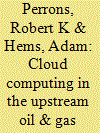

|
|
|
|
|
| Publication |
2013.
|
| Summary/Abstract |
Despite the compelling case for moving towards cloud computing, the upstream oil & gas industry faces several technical challenges-most notably, a pronounced emphasis on data security, a reliance on extremely large data sets, and significant legacy investments in information technology infrastructure-that make a full migration to the public cloud difficult at present. Private and hybrid cloud solutions have consequently emerged within the industry to yield as much benefit from cloud-based technologies as possible while working within these constraints. This paper argues, however, that the move to private and hybrid clouds will very likely prove only to be a temporary stepping stone in the industry's technological evolution. By presenting evidence from other market sectors that have faced similar challenges in their journey to the cloud, we propose that enabling technologies and conditions will probably fall into place in a way that makes the public cloud a far more attractive option for the upstream oil & gas industry in the years ahead. The paper concludes with a discussion about the implications of this projected shift towards the public cloud, and calls for more of the industry's services to be offered through cloud-based "apps."
|
|
|
|
|
|
|
|
|
|
|
|
|
|
|
|
| 15 |
ID:
121318
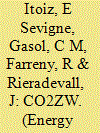

|
|
|
|
|
| Publication |
2013.
|
| Summary/Abstract |
In the frame of the European project titled "Zero Waste" (1G-MED08-533), a tool has been developed called CO2ZW for estimating the GHG emissions for the management of MSW at the municipal, regional or national levels with small amounts of input data. The objective of this paper is to demonstrate that the CO2ZW tool allows us to inventory and monitor GHG emissions from MSW following the IPCC guidelines for national inventories and the principles of life cycle assessment (LCA). The CO2ZW tool includes the key stages and parameters for calculating GHG emissions and includes several advantages regarding the implementation of the default values of the Mediterranean European countries, an improvement in accessibility (online free access) and two approaches for calculating GHG emissions from landfills. The results of this paper show that for countries with medium and high rates of deposition, implementation of the European policies limiting waste in landfills can contribute to mitigate climate change in a remarkable way. With the CO2ZW tool, it is possible to evaluate waste management choices depending on waste management infrastructures and waste policies, along with the quantification of GHG emissions from MSW management, which is essential to guide waste policy options and climate change solutions.
|
|
|
|
|
|
|
|
|
|
|
|
|
|
|
|
| 16 |
ID:
121283


|
|
|
|
|
| Publication |
2013.
|
| Summary/Abstract |
The reduction of pollutant emissions and greenhouse gases, as well as the strong energy dependence on fossil fuels (gas and fuel oil), have, among other reasons, led many countries in recent years to develop policies to promote and encourage the use of alternative, sustainable, clean and predictable sources of energy. This paper presents an overview of the production of electricity from renewable sources (PE-RES) in Spain, and offers an outline of the current level of development of renewable energy. It also reviews the current support system, the costs of integrating renewable energy into the electric system as well as the effects of this type of energy on the electricity wholesale market price, the Gross Domestic Product (GDP), the environment, human health and employment.
|
|
|
|
|
|
|
|
|
|
|
|
|
|
|
|
| 17 |
ID:
121298


|
|
|
|
|
| Publication |
2013.
|
| Summary/Abstract |
This paper uses the generalized method of moments (GMM) estimation to a panel data error correction model (ECM) in order to measure the asymmetries in the transmission of shocks to input prices and exchange rate onto the wholesale and retail gasoline price, respectively. For this purpose, we use an updated data set of 6369 weekly observations (January 2000 to February 2011) for 11 euro zone countries. The results indicate the existence of asymmetric responses in the retail and wholesale segment due to possible reasons (oligopolistic structure of the refining industry, existence of consumers search costs, regulatory and legal barriers).
|
|
|
|
|
|
|
|
|
|
|
|
|
|
|
|
| 18 |
ID:
121284


|
|
|
|
|
| Publication |
2013.
|
| Summary/Abstract |
This paper develops a system dynamics model to analyze the impacts of different kinds of capacity payment as investment incentive mechanisms in Iranian electricity market. Since it is aimed that the incurred capital and operating costs of generation technologies be recovered in Iranian electricity pool, the noncompetitive capacity payment mechanism has been introduced for this purpose in order to encourage new investments in electric power generation system. In the current mechanism, the capacity payments are designated to the generating units in the whole country electricity market. An annual base value of capacity payment is proposed based on recovering the capital cost of a benchmark generation technology. This value is altered according to the operational reserve in the day-ahead electricity market. This supporting policy is simulated and analyzed in the proposed dynamic framework in order to track the trend of new investments in the Iranian electricity market. The feasibility study of implementing the regional capacity assignment is the main focus of this paper. Different possible regulating policies such as floating rates for capacity payment and electricity price cap, the multiple capacity payments to various technologies, and the regional electricity market with territorial capacity allocation are examined in order to investigate the consequences and performances of different decisions and policies in the capacity investment of Iranian electricity market.
|
|
|
|
|
|
|
|
|
|
|
|
|
|
|
|
| 19 |
ID:
121309
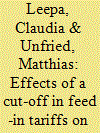

|
|
|
|
|
| Publication |
2013.
|
| Summary/Abstract |
We analyze the effects of feed-in tariff (FIT) adjustments on installed photovoltaic capacity in Germany. We find that the current system temporarily accelerates installments and does not countervail over-investment. Therefore, we design three alternative FIT regimes: (i)constant FITs, (ii) linearly decreasing FITs, and (iii) FIT adjustments related to the changes of photovoltaic panel prices. Simulations of installed capacities indicate that alternative adjustment mechanisms could be more appropriate to meet the government's installation target. Moreover, we calculate the consumers' burden induced by the FITs and find that it might be reduced by alternative mechanisms.
|
|
|
|
|
|
|
|
|
|
|
|
|
|
|
|
| 20 |
ID:
121312


|
|
|
|
|
| Publication |
2013.
|
| Summary/Abstract |
This paper proposes an artificial neural network (ANN) technique as a new approach to evaluate the energy input, losses, output, efficiency, and economic optimization of a geothermal district heating system (GDHS). By using ANN, an energetic analysis is evaluated on the Afyon geothermal district heating system (AGDHS) located in the city of Afyonkarahisar, Turkey. Promising results are obtained about the economic evaluation of that system. This has been used to determine if the existing system is operating at its optimal level, and will provide information about the optimal design and profitable operation of the system. The results of the study show that the ANN model used for the prediction of the energy performance of the AGDHS has good statistical performance values: a correlation coefficient of 0.9983 with minimum RMS and MAPE values. The total cost for the AGDHS is profitable when the PWF is higher than 7.9. However, the PWF of the AGDHS was found to be 1.43 for the given values. As a result, while installing a GDHS, one should take into account the influences of the PWF, ambient temperature and flow rate on the total costs of the system in any location where it is to be established.
|
|
|
|
|
|
|
|
|
|
|
|
|
|
|
|
|
|
|
|
|